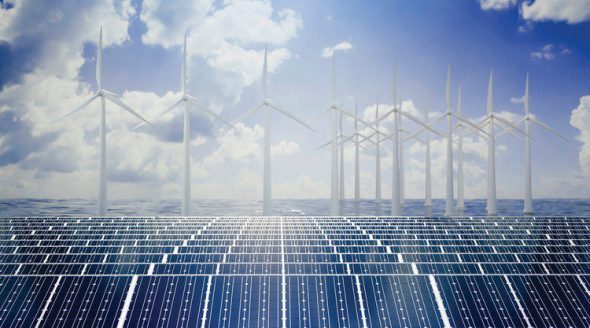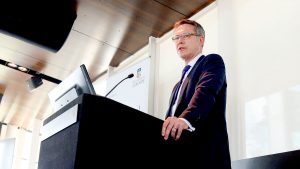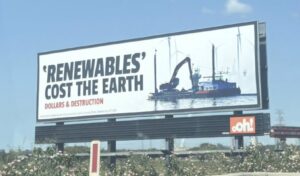Over the years we’ve seen lobbyists and incumbent energy interests repeatedly proved badly wrong about the levels of renewable energy we could manage to achieve. Back when the RET scheme was developed in the late 1990’s at a paltry 9500 gigawatt-hours (GWh), they shook their heads and sternly tut-tutted that this was far too ambitious.
Four years after the scheme commenced we’d committed enough capacity to comfortably exceed it. More recently we’ve had Trevor St. Baker – founder of ERM and owner of the Vales Point Coal Power Station – telling the Australian Financial Review in January this year:
“There is no way we are going to make the 33,000 target. It’s impossible to get there. That’s what the argument should have been about all the time, it should have been 20,000 [gigawatt hours]. That’s all you can reasonably expect to be built”
A few months later in Green Energy Markets’ first quarter Renewables Report we estimated that Australia had already committed to construction enough new wind and solar farms to produce 25,000 gigawatt-hours of RET eligible generation by 2020.
Given the more than 10 gigawatts of wind and solar projects banked up in the development pipeline, it’s apparent to anyone (other than those that believe global warming is a conspiracy of Jewish bankers in cahoots with communists) that we could shoot right past the 33,000GWh RET as well as cover around 3000-4000GWh of voluntary demand for green energy.
However, just because we can doesn’t necessarily mean that we will.
It is true that things are going well for the renewable energy sector. In mid December last year I observed that the renewable energy investment drought had broken. I’m pleased to note that the investment surge foreshadowed then, has unfolded.
By the end of December 2016 we saw 906MW of renewable energy investment commitments over the last quarter of 2016. This exceeded levels of investment witnessed over any prior whole year stretching back to the beginning of the RET in 2001. So far this year we’ve committed 1328MW to construction.
A few weeks ago the Clean Energy Regulator took account of these positive developments and suggested that the market looked to be on track to achieve the 2020 target. However their statement that the target was achievable was qualified by the comment, “provided the pace of investment keeps up with this momentum in 2017.”
So will this investment momentum continue?
In answering this question one needs to realise that critical to surge of investment we’ve seen so far has been the provision of long-term contracts, in many cases from state governments, as well as power retailers.
The table below details that of the 2607MW of projects committed in 2016 and so far in 2017, just 19% had no long-term offtake agreement or other form of contract providing certainty over a significant proportion of its revenue.
Of note is that almost a third of the capacity committed to construction was underpinned by long term contracts with either the ACT, Victorian or Queensland Governments.
Capacity committed to construction with and without long-term contracts for output
| 2016 | 2017 | TOTAL | |
| With long-term government contract | 584 | 230 | 814 |
| With long-term retailer or corporate contract | 304 | 989 | 1,293 |
| No long-term contract | 390 | 109 | 500 |
| Share with no long-term offtake | 31% | 8% | 19% |
Source: Green Energy Markets forthcoming LGC Price Drivers Assessment
Now some of the capacity with long term contracts also had a proportion of their output uncontracted as well. However feedback we’ve received from developers has been that the long-term contracts were vitally important to bank financing because it locked-in a large-enough proportion of their revenue to give banks reassurance debt repayments could be covered.
Indeed it’s worth noting that of the 109 MW that we’ve listed in the table has having no long-term offtake agreement, two projects accounting for 82.5MW were financed as part of a portfolio. This grouped the uncontracted projects together with other projects which did have long-term contracts for their output .
Now if we look into the future what’s apparent is that the private sector retailers aren’t likely to offer enough long-term contracts to get us all the way to the 2020 RET target.
As an example Origin Energy has said it has already committed to 1200MW of its 1500MW contracting target. Energy Australia are half way towards their 500MW target. And if AGL proceed with the full 460MW of the Cooper’s Gap wind farm then they too have largely fulfilled their capacity objective for their Powering Australia’s Renewable Fund.
The chart below provides our estimate of how much renewable energy LGC supply we can expect to see if all the LGC tenders and PPAs announced so far were to convert into operational projects (yellow segment) and the power retailers were to proceed with announced contracting targets (blue segment).
If you compare this relative to demand shown in grey one can see it won’t be enough. The yellow line shows we end up with a deficit of LGCs by 2018 and this accumulates to a very large shortfall by 2030.
LGC supply-demand balance assuming prospective retailer PPAs targets convert into committed projects (with carryover of penalties)
This indicates that there is a need for others to fill the gap left by the power retailers. Power retailers have made it repeatedly clear that they don’t see it as their responsibility to contract long term for their large commercial and industrial customer base, given these customers have been low margin and prone to switching.
Meanwhile, the ACT Government has already fulfilled its 100% renewables target – it has nowhere left to go. The Victorian Government could try to use a David Bradbury policy technique, claiming it has met its 25% of generation by 2020 target, even though it was the closure of Hazelwood that delivered it.
This has acted to reduce the denominator while the government is yet to do much to increase renewable energy in the state. The Queensland Government is yet to announce anything on what policies it will enact to deliver on its 2030 target, which might help with the 2020 as well. Meanwhile, NSW has indicated an intention to contract for 1200GWh but this has not yet advanced to tender stage.
We expect to see some further projects advancing on an uncontracted or partly contracted basis. However, it’s not clear financiers quite have the courage to deliver the scale required.
Large end consumers could also elect to contract long-term directly with projects. However, our discussions with those that have tried such models suggest it is a very hard slog that in many cases takes a long time to get not all that far.
So there are options available to fill the gap to the target. But at this stage it is not clear whether it will be.
Tristan Edis is Director – Analysis and Advisory at Green Energy Markets.








